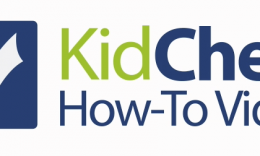Ten Safety Practices for Summer Camp

Many camp organizations acknowledge that child safety and protection are important, but few realize the impact if not prioritized. By improving safety, organizations can benefit from reduced risk and liability, a positive parent perception, increased word of mouth, and better retention.
Every organization is unique, and there’s no one-size-fits-all approach, but assessing what works and what doesn’t is a great start. When caring for other people’s kids, camps are responsible for ensuring they provide the highest standard of care, including safety. To help, each organization should conduct an annual security assessment to determine its level of preparedness.
When working to improve camp safety, here are some practices to consider.
- Assess your land and facilities for vulnerabilities, such as fallen fences, burned-out lights, isolated areas, broken locks, and windows, or anything that could create a vulnerability.
- Create a check-in and check-out process for all campers, including photo verification, to ensure only authorized guardians can pick up. Due to the chaotic nature of arrival and departure, a mobile check-in/check-out process helps eliminate wait times, adds flexibility and convenience, and allows staff to offer a personal touch.
- Add a short 5-10-minute child safety survey to your annual assessment. Use it to learn how your organization is doing regarding safety, gain feedback, and open lines of communication with families.
- Establish a child protection policy that ensures anyone coming into contact with children has a defined set of working principles that eliminates the gray area when interacting with kids. The policy should include screening, reporting, training, touch, social media, supervision ratios, transportation, bullying, and boundaries.
- Determine a visitor protocol for friends and family, delivery people, suppliers, vendors, and anyone just stopping by unannounced. This should include a check-in/out process, available time, dates, and visitor identification for those walking around.
- Implement a comprehensive screening process for any individual coming into direct contact with children or working onsite at the camp. The screening process should, at a minimum, include a written application, background check, social media review, both personal and professional references, face-to-face interview, motor vehicle report, and drug screen.
- Identify and track allergies, medications, release forms, and other wellness-related information with a health management plan. The plan should include any information you will need to administer and monitor medication and prevent exposure or overdose. It’s best to have the information digital so that it can be accessed quickly for administering medication and allergies.
- Equip leadership, staff, and volunteers with consistent, targeted training on all policies, guidelines, and protection protocols. Training should be done before, during, and after the camp season.
- Get to know your local resources, such as police, fire, and paramedics. They are fantastic resources for helping to identify opportunities for improvement in safety. They are also great resources when determining emergency management procedures in the event of an evacuation or a natural disaster. During the off-season, providing access to your camp for training purposes is helpful for them to learn the layout of your property in the event they need to respond.
- Communicate to new and returning families what you’re doing to improve child safety. Families appreciate seeing protection measures in place, understanding how they work, and what the response will be during an incident. The point is to share your efforts to improve safety. You can do this in the registration packet, online, via social media, meetings, newsletters, etc.
The benefits of summer camp can last a lifetime. Camps that prioritize safety offer parent’s peace of mind and ensure they’re leaving their kids in good hands.
Click here to learn more about the benefits of using secure children’s and youth check-in to help manage your children’s area, keep families smiling, and improve child safety. You can also subscribe to the KidCheck blog or find us on YouTube, Twitter, Facebook, Pinterest, and Instagram.
Photo by Ben White on Unsplash


